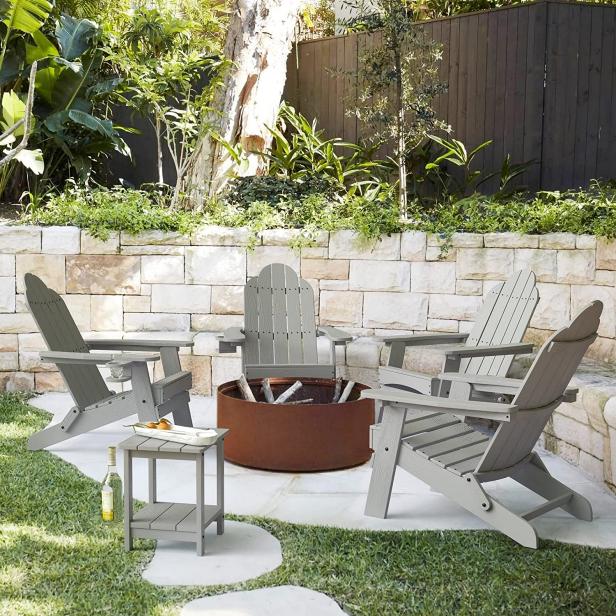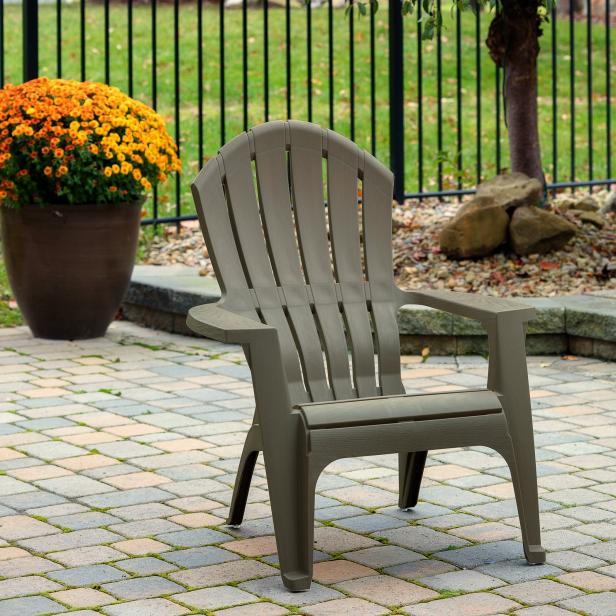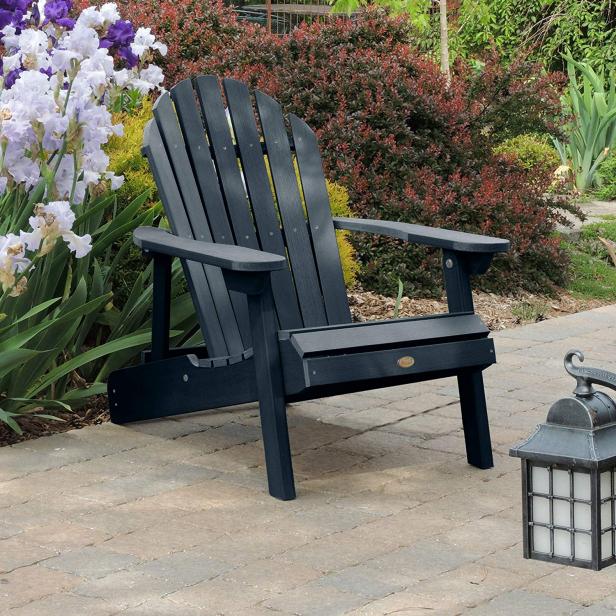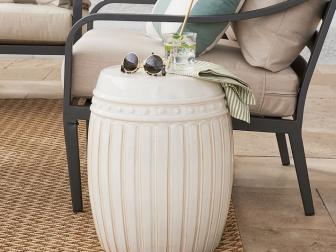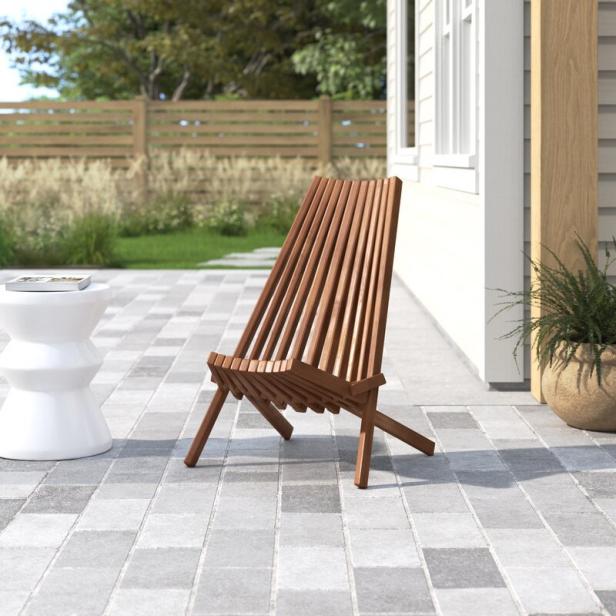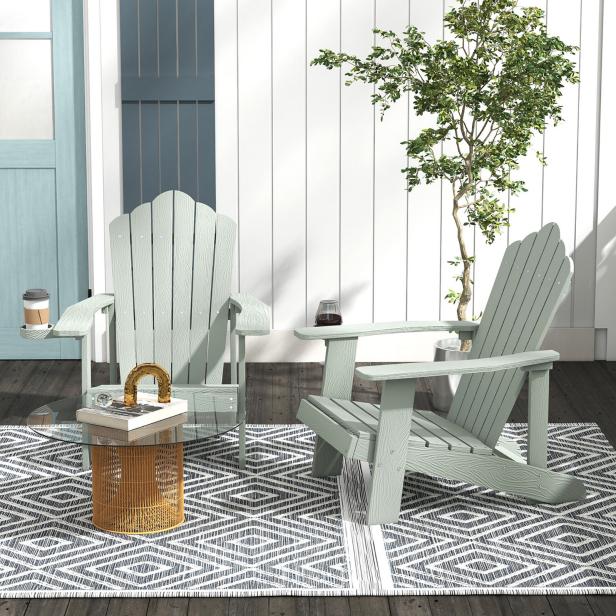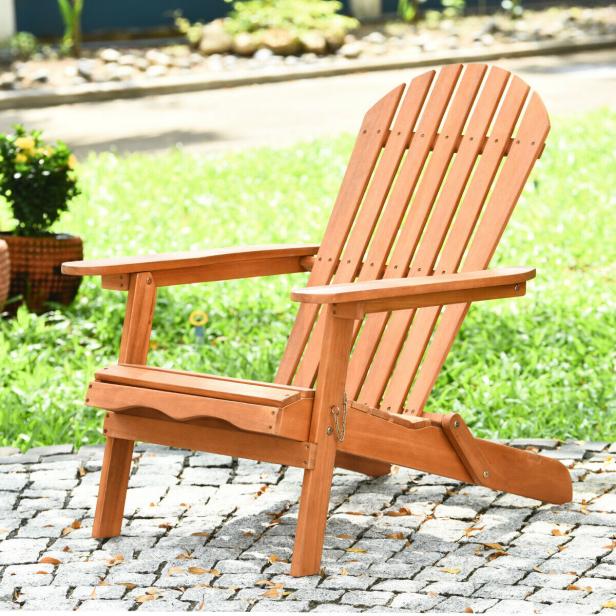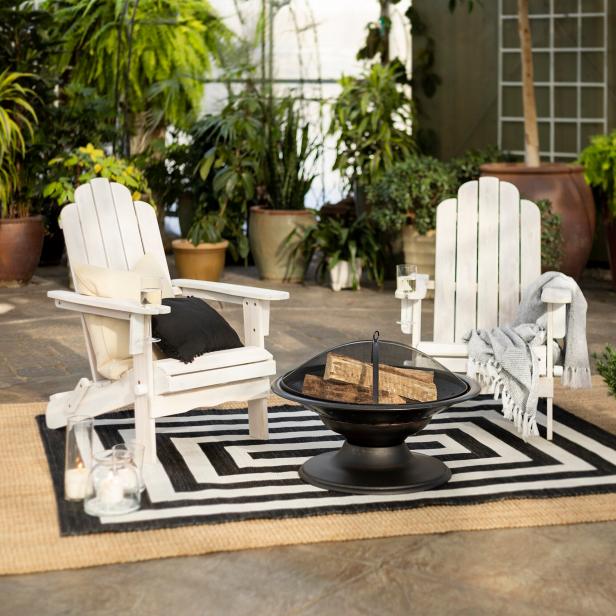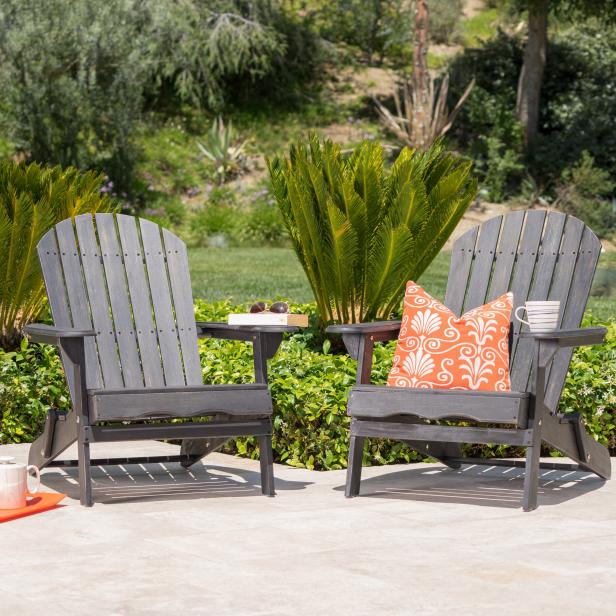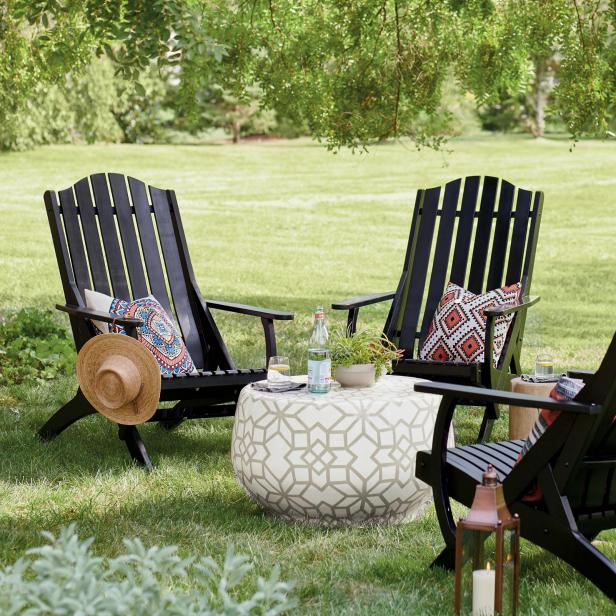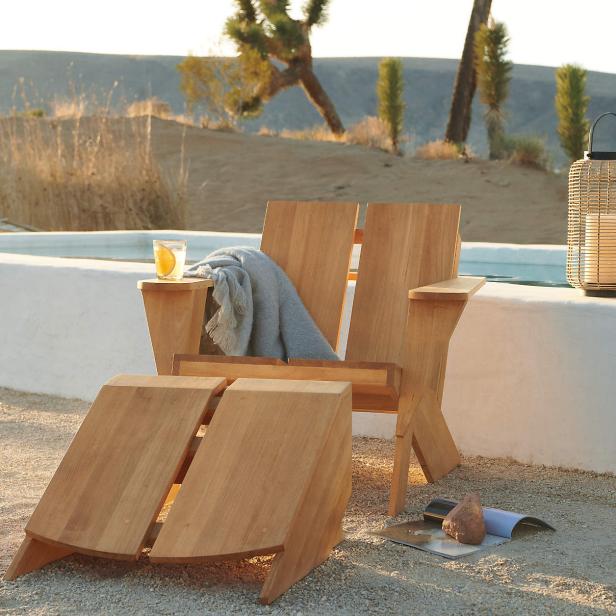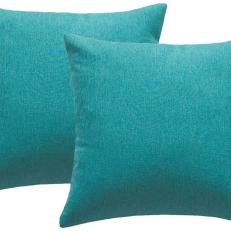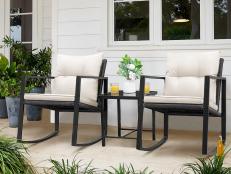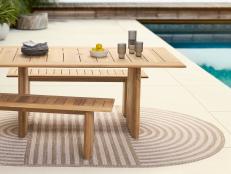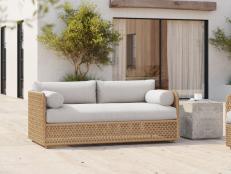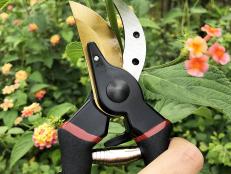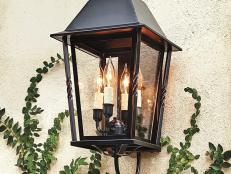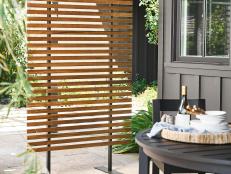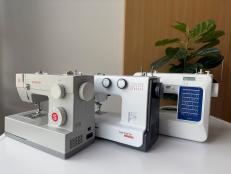13 Best Adirondack Chairs for Every Style and Budget
Because sunny afternoons are best enjoyed in an Adirondack chair.

Our Top Adirondack Chair Picks
- Best Overall: Clarinda Kiln Dried Hardwood Adirondack Chair
- Best Set: Lue Bona Folding Adirondack Chair
- Best Budget: Adams Deluxe RealComfort Adirondack Chair
- Best Splurge: Pottery Barn Malibu Adirondack Chair
- Best Traditional: Highwood Hamilton Adirondack Chair
- Best Folding: Sand & Stable Abingdon Folding Adirondack Chair
- Best Resin: Gumbert Resin Adirondack Chair
- Best Eucalyptus: Gymax Adirondack Chair
- Best Acacia Wood: Costway Adirondack Chair
- Best Coastal: Birch Lane Imane Folding Adirondack Chair
- Best With Cup Holders: Highland Dunes Mccombs Adirondack Chair
- Best Contemporary: Grandin Road Newcomb Adirondack Chair
- Best Modern: Crate & Barrel Paso Natural Teak Wood Adirondack Chair
Looking for the perfect outdoor chair to complete your patio, porch or deck? We've got you covered. Adirondack chairs make failproof additions to your alfresco lounge because of their enduring design and unmatched comfort. These celebrated chairs come in a myriad of styles, colors, materials and price points. We curated a list of the best Adirondack chairs for every budget. Learn how to pick the best Adirondack chair for your outdoor space, then shop our favorite finds (starting at $30!) in the links below.
How We Picked
To find the best Adirondack chairs on the market, we spent hours researching and comparing chairs from trusted retailers based on their materials, weather resistance, adjustable features, weight and colorway options. From there, we curated a shopping guide of 13 standout Adirondack chairs that we feel exceed our expectations in most or all the categories listed above to bring you the best options for every style and budget.
- Retractable ottoman
- Low maintenance finish
- Adjusts from chair to chaise in seconds
- Only one color available
- Cannot fold for storage
With an integrated ottoman, roomy armrests and classic design — it’s easy to see why the Clarinda earns our pick for the best adirondack chair on this list. This winning design is handcrafted and forged from kiln-dried hardwood with a natural gray-washed finish to showcase the natural wood grain. Better still, it’s weather, water, rust and UV-resistant, making it as durable as it is beautiful. And, the pièce de résistance? A retractable ottoman that slides under the seat to provide extra leg room as needed.
- Material Kiln-dried hardwood
- Weight Not listed
- Adjustable Yes
- Weather-Resistant Yes
- Colors Gray-washed wood
- Available in several set quantities
- Neutral and vibrant colorways
- Hidden cup holder
- Assembly required
- Limited stock for certain colors
Gather the family around your fire pit and enjoy each other’s company through spring, summer and fall with this four-chair set from Amazon. The Lue Bona folding Adirondack set includes four weather-resistant, UV-protected poly lumber chairs. Snag the four-chair set in your choice of eight eye-catching finishes: black, brown, green, gray, navy, red, teal or white.
- Material High Density Polyethylene
- Weight 35 pounds
- Adjustable No
- Weather-Resistant Yes
- Colors Black, aruba blue, blue, turquoise, bright red, brown, dark brown, dark gray, gray, navy, sand, white
- Stacks for quick storage
- Ultra-lightweight
- No assembly required
- Cannot dissemble for storage
- Lacks reclining backrest
Relaxation comes easy in the Deluxe RealComfort Adirondack Chair. The roomy chair is crafted from durable-yet-lightweight plastic in a gray, navy or sea glass finish and boasts a classic Adirondack silhouette. Snag a set and dress them with all-weather pillows for outdoor gatherings, then stack the lot in your garage or shed between events.
- Material Resin
- Weight 7.25 pounds
- Adjustable No
- Weather-Resistant Yes
- Colors Gray, navy, sea glass
- Luxurious streamlined appeal
- Available solo or in a set of two
- Easy to clean
- Cushions sold separately
- Modern look not ideal for all aesthetics
- One finish option
Ready to invest in the Adirondack chairs of your design-obsessed dreams? Enter the Malibu Metal Adirondack Chair from Pottery Barn. This splurge-worthy design is crafted from durable aluminum and finished with a fade-resistant powder coating to easily weather any forecast. Durability aside, this chair boasts a sleek, streamlined silhouette that looks beautiful in any setting.
- Material Aluminum
- Weight 53.5 pounds
- Adjustable No
- Weather-Resistant Yes
- Colors Black
- Timeless appeal
- Folding and reclining frame
- Approved for year-round outdoor use
- Expensive price point
- Lacks cup holder
Bring timeless appeal to your outdoor space with this celebrated Highwood Hamilton Adirondack Chair. It sports a brilliant Federal Blue hue that elevates any outdoor space in a flash. Best part? This beauty is designed to remain outdoors all year long and promises not to peel, rot or crack over time. Blue not your color of choice? Snag the stately design in nine additional hues, including toffee, rustic red, coastal teak or whitewash.
- Material Engineered wood, marine grade recycled plastic
- Weight 34 pounds
- Adjustable Yes
- Weather-Resistant Yes
- Colors Black, coastal teak, eucalyptus, federal blue, harbor gray, nantucket blue, rustic red, weathered acorn, white, ivory, woodland brown
- Statement silhouette
- Lightweight frame
- Folds flat for seamless storage
- Lacks armrests
- Not ideal for traditional spaces
- Only one finish available
Energize your outdoor space with this comfortable, easy-to-store folding Adirondack chair. The wood design is suitable for indoor and outdoor use, and the modern slatted back promises support and relaxation with each use. Style with a summery toss pillow, a pattern-clad lumbar pillow and a glossy ceramic garden stool to create the ultimate backyard escape.
- Material Manufactured wood
- Weight 18 pounds
- Adjustable Yes
- Weather-Resistant Yes
- Colors Brown
- Integrated cup holder
- Available in unique colors
- Weatherproof materials
- Difficult to store
- Lacks adjustable backrest
This stunning chair combines trademark Adirondack lines with a contemporary hues for a fresh design perfect for your porch or patio. The all-weather resin chair is durable, too; it’s resistant to rust, peeling, denting and fading in the sun. Oh, and it comes with an integrated cup holder to babysit your coffee or bubbly water while you tend to your patio plants or chat with friends.
- Material Resin, stainless steel
- Weight 33 pounds
- Adjustable No
- Weather-Resistant Yes
- Colors Gray, red, white, green, yellow, brown, blue, black
- Affordable price point
- Classic Adirondack look
- Ergonomic backrest
- Wood finish may fade
- Assembly required
Warm your front porch, deck or patio with this eucalyptus Adirondack chair. The natural wood chair features a wide batten and an ergonomic design to provide you with next-level comfort and support. Each chair can hold up to 350 pounds and folds up for easy, space-saving storage between seasons.
- Material Eucalyptus
- Weight 19 pounds
- Adjustable No
- Weather-Resistant Yes
- Colors Natural finish
- Durable solid wood construction
- Three classic colorways
- Smooth wipeable surface
- Non-adjustable frame
- Simple design
Nothing spells timeless quite like a sturdy wood Adirondack chair. This enduring design is crafted from weather-resistant acacia wood and galvanized hardware to ensure comfort for years to come. The ergonomic design offers support where you need it most, and the slatted seat welcomes the breeze to keep you comfortable on the most sweltering summer afternoons.
- Material Acacia wood
- Weight 19 pounds
- Adjustable No
- Weather-Resistant Yes
- Colors Natural, gray, white
- Standout scalloped backrest
- Weathered wood finishes
- Comfortable curved seats
- Heavy and difficult to move
- Requires teak oil application to maintain finish
- Not recommended for climates with extreme temperatures
Bring coastal flair to your backyard or front porch with this white-washed Adirondack chair. The eye-catching design features classic Adirondack lines and wears a rustic white finish for a result that exudes beachfront charm. The foldable chair is easy to tote around your yard, and it’s made from solid wood and holds its own against harsh UV rays and unrelenting rainy days.
- Material Acacia wood
- Weight 29 pounds
- Adjustable Yes
- Weather-Resistant Yes
- Colors White wash, navy wash
- Designed for outdoor entertaining
- Available in five colorways
- Polished aesthetic
- Weighs almost 50 pounds
- Requires two people for assembly
Get that charming lived-in look straight out of the box with this inviting Adirondack duo. The pair is crafted from solid acacia wood and sports a unique finish that adds ample charm to your farmhouse porch or cottage patio. The chairs are rust-resistant and hold up against moisture for long-lasting use. Smoky gray not your go-to hue? Snag the same design in white, navy blue, gray or natural wood.
- Material Solid acacia wood
- Weight 46.3 pounds
- Adjustable Yes
- Weather-Resistant Not listed
- Colors White, dark gray, gray, natural, navy blue
- Develops patina without affecting durability
- Spacious armrests
- Matching ottoman available
- Must be stored inside during bad weather
- Annual urethane application required to maintain all-weather finish
Your search for the perfect Adirondack chair ends with this striking, sloped-back seat. The show-stopping chair is designed with comfort in mind, featuring roomy armrests and a contoured profile that supports your back and neck with ease. The indoor-outdoor chair is crafted to last, too, with a mahogany and eucalyptus hardwood base coated with a hand-applied urethane finish.
- Material Mahogany. eucalyptus wood
- Weight 33 pounds
- Adjustable No
- Weather-Resistant Yes
- Colors Ash black, greige
- Distinctive designer look
- Broad armrests
- Classic and contemporary color options
- Luxury price tag
- Not refundable
- Lacks adjustable features
We love this modern, minimal take on the classic Adirondack chair. It comes in 12 colors, including this natural teak finish or several fun colors made in recycled plastic material for $499.
- Material Teak wood, POLYWOOD
- Weight Not listed
- Adjustable No
- Weather-Resistant Yes
- Colors Teak, black, slate gray, white, sand, mahogany, green, lime, aruba, pacific blue, tangerine, sunset red
How to Choose the Best Adirondack Chair
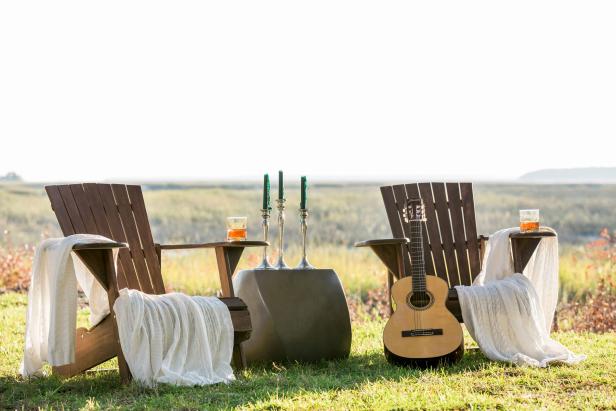
Style
Adirondack chairs come in various silhouettes that speak to different design styles. Are you outfitting a traditional garden patio, setting up a bohemian fire pit or adding seating to a contemporary deck? Use your design style or exterior architecture as your blueprint and select an Adirondack chair that best complements your outdoor furniture and decor.
Material
The most popular materials for Adirondack chairs are wood, plastic or metal. Each material has its pros and cons, and one may be a better fit for your needs.
Wood Adirondack chairs are heavy, sturdy and enduring, making them ideal if investing in a permanent fixture for your fire pit, patio or deck. Solid acacia, cedar, teak or eucalyptus wood are the go-to species for Adirondack chairs due to their durability and rot resistance. That said, wooden chairs may require periodic re-staining or painting to remain looking fresh over the years.
Plastic Adirondack chairs are celebrated because of their low maintenance and high mobility. Unlike the solid wood options, plastic or resin Adirondack chairs are often lightweight, stackable and easy to move from point A to point B. The go-to plastic used for Adirondack chairs is Polywood lumber. Polywood is a unique material made from high-density polyethylene, which is weather and UV-resistant. The high-performing plastic is widely used for outdoor furniture because it features graining that mimics the look of authentic wood but won’t deteriorate over time.
Metal is another top material for Adirondack chairs due to its durability against the elements. With that said, metal Adirondack chairs are less popular than plastic or wood and often seen in contemporary or modern designs.
Comfort
Comfort is key. Thomas Lee of Westport, N.Y., designed the original Adirondack chair to feel comfortable on any terrain. The recipe for Lee’s chair was a high back, roomy armrests and a sloped seat that offered a gentle recline. These Adirondack cornerstones remain must-have elements you should prioritize when shopping for your perfect chair today. Other features that may increase comfort include a reclining backrest, gliding arms and shallow seats that make it easier to get up after your afternoon lounge session.
FAQs
Where should you set up Adirondack chairs?
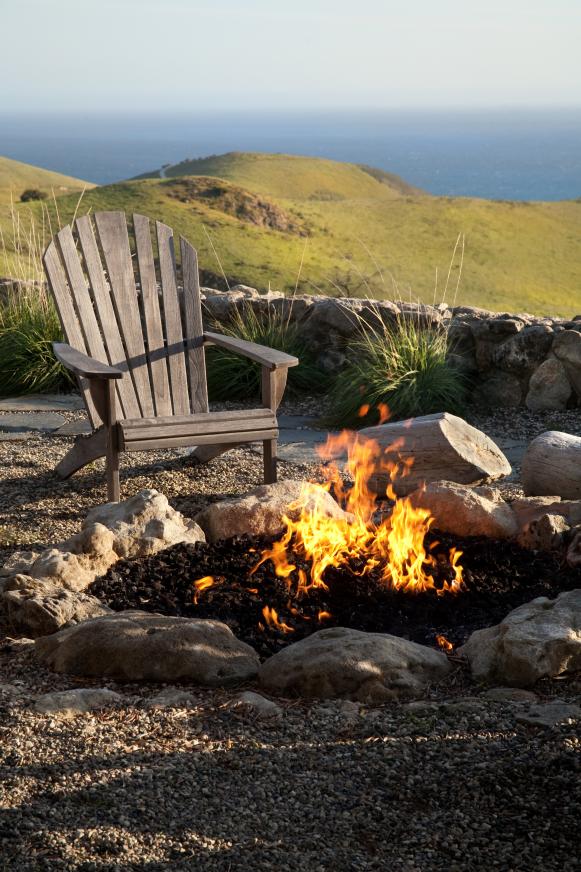
Lepere Studio
In short, anywhere. Thomas Lee designed Adirondack chairs to cater to uneven landscapes and provide equally-exceptional comfort whether you find yourself lounging hillside, nestled on a sandy bank or fireside on rocky terrain. Adirondack chairs boast a distinctive back slope that allow you to sit comfortably on hills and flat surfaces alike.
What’s the best material for Adirondack chairs?
The best material for Adirondack chairs is largely determined by your goals for your chairs. Plastic or Polywood lumber is ideal for most as these materials maintain their original finish and are highly durable, holding up against weather and UV rays for years with proper care. If you prefer natural materials, solid woods like acacia, teak and eucalyptus are unparalleled in their natural durability and beauty. With that said, wood Adirondack chairs develop a patina and may require restaining over time if you desire a “new” look.
Can you leave Adirondack chairs outside all year round?
Most Adirondack chairs are made from weather-resistant materials, but we recommend using furniture covers or bringing them inside during extreme weather. Even the most enduring chairs may show signs of wear, such as fading or cracking, after several seasons of exposure to heavy freezes or sweltering heat. Check out the retailer listing page to learn tailored instructions on how to store your Adirondack chair before purchasing.







